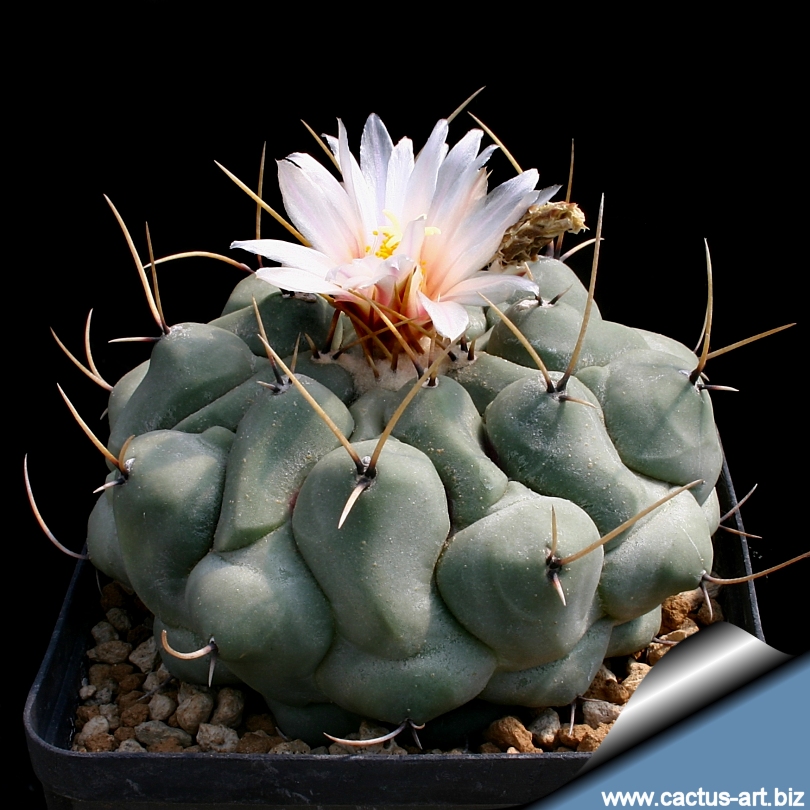|
|
|

T. phymatothelos
can be distinguished from other form of the T.
rinconensis
complex because the stem is always strongly
depressed and
glaucous , the
spines are shorter and slightly curved, and the
flowers are more or less clear pink. |
|
Advertising
|
|
|
|
Family:
Cactaceae (Cactus
Family)
|
|
Origin: occurs south of Saltillo,
Mexico.
Synonyms:
-
Echinocactus phymatothelos Poselger ex Ruempler, in Förster,
Handb. Cact., ed. 2, 602 (1885).
Thelocactus rinconensis (Poselg.) Britton & Rose [detailed
view
-
Thelocactus
phymatothelos Br. &
R. ('phymatothele'), Cact. 4: 8 (1923)
-
Thelocactus rinconensis
var. phymatothelos Glass & Foster, Cact. Succ. J. (US)
49: 246 (1977).
-
Thelocactus rinconensis
ssp. phymatothele (Poselger) Glass, Ident. Guide
Threatened Cacti of Mexico 1: TH/RIN (1997).
-
Thelocactus rinconensis
ssp. phymatothelos (Poselger) Doweld nom. superfl.,
Sukkulenty 1: 30 (1999).
Cultivation: Easy to cultivate. Water moderately from Spring to
Autumn. In Winter, keep dry. Sun Exposure: Full sun to light
shade
Reproduction: Nearly always from seed, since the plant rarely
produces plantlets.
|
|
|
|
Thelocactus phymatothelos
is now considered a
synonym of
T. rinconensis, along with T. lophothele, T.
nidulans, and others. It is not sufficiently distinct to deserve
its own formal status.
Photo of conspecific taxa,
varieties, forms and cultivars of
Thelocactus rinconensis:

 |
|